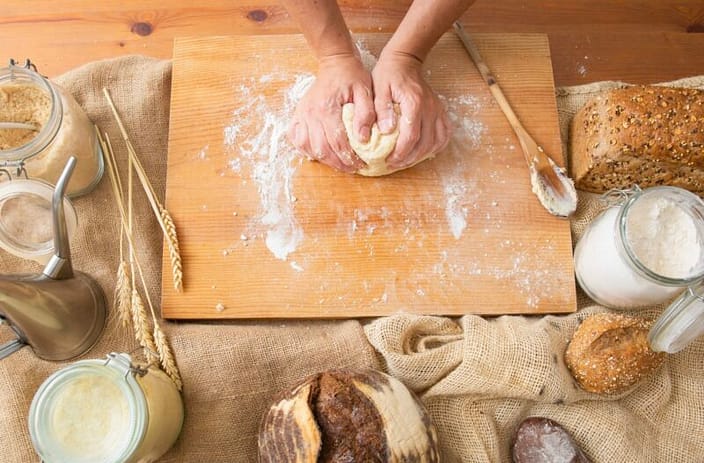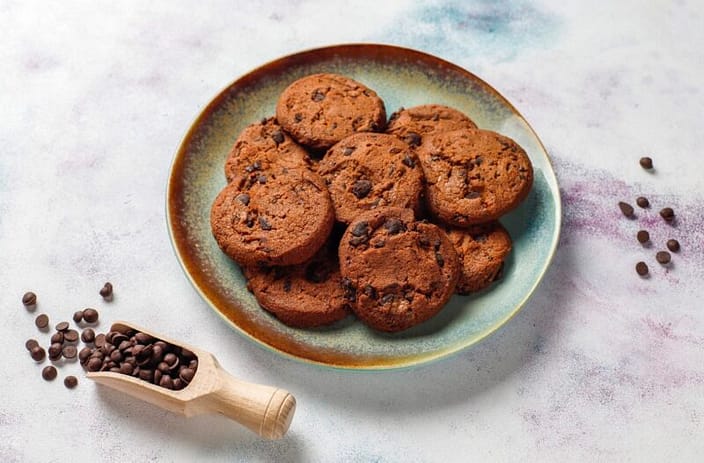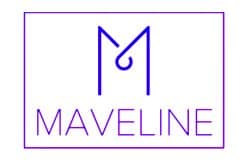Exploring nutritious grain alternatives is vital for diversifying your diet, enhancing nutritional intake, and accommodating gluten sensitivities, promoting overall health and well-being.
I. Introduction
In a world where dietary preferences and sensitivities are as diverse as ever, exploring nutritious grain alternatives for gluten-free baking has emerged as a culinary art form in its own right. With its growing popularity, the demand for delectable gluten-free treats has skyrocketed.
But, beyond the quest for taste, there's a deeper journey to embark upon – one that leads us to the heart of nature's pantry. Join us as we explore the fascinating realm of gluten-free baking and discover the wholesome, natural, and healthy grain alternatives that can transform your culinary creations into nutritious delights.
II. Understanding Gluten-Free Baking
A. Gluten
It is a protein found in wheat, barley, and rye, and provides elasticity to dough, giving bread its chewy texture. However, some individuals have a medical condition called celiac disease or gluten sensitivity, making gluten consumption harmful.
For them, gluten triggers digestive issues, autoimmune reactions, and discomfort. Hence, they need to avoid gluten-containing foods.
B. Gluten-free baking
Gluten-free baking presents challenges, as gluten provides structure and texture. Substituting it requires precise combinations of grain alternatives, starches, and binders. It's vital to find suitable alternatives that mimic the taste and texture of traditional baked goods while being nutritious and natural. This ensures that everyone, regardless of dietary restrictions, can enjoy delicious and wholesome treats.
III. Exploring Nutritious Grain Alternatives for Gluten-Free Baking
1. Quinoa
Known as the "mother of all grains," quinoa (check out my blog post about it) is a complete protein source, containing all essential amino acids. It's rich in fiber, vitamins, and minerals, making it a nutritional powerhouse. In gluten-free baking, quinoa flour adds moisture, protein, and a mild nutty flavor.
2. Teff
Teff is native to Ethiopia and is a good source of iron, calcium, and fiber. Its small size allows it to blend well in recipes. Teff flour imparts a subtle earthy flavor, ideal for creating soft and moist baked goods.
3. Amaranth
Amaranth is high in protein and contains essential amino acids, particularly lysine. It's also rich in fiber, iron, and calcium. Amaranth flour adds a slightly nutty flavor and a delightful texture to gluten-free recipes.
4. Sorghum
Sorghum is a versatile gluten-free grain rich in antioxidants, fiber, and vitamins. It has a mild, sweet flavor and works as a primary flour in many recipes, contributing to a tender crumb texture.
Incorporating these grains (know more about it in my blog post) into your gluten-free baking enhances the nutritional profile of your creations and adds unique flavors and textures. Experimenting with these alternatives can lead to a wide range of delicious gluten-free treats that cater to various dietary needs.

IV. Gluten-Free Flour Blends
A. Creating Your Gluten-Free Flour Blend
1. Choose Your Grains
Select a combination of gluten-free grains based on your recipe and desired flavor. Common choices include rice flour, tapioca flour, potato starch, and the grains mentioned earlier (quinoa, teff, amaranth, sorghum).
2. Proportion
Determine the ratio of grains in your blend. A basic starting point is a 2:1:1 ratio, such as 2 parts rice flour to 1 part tapioca flour and 1 part sorghum flour. Adjust based on the characteristics you want for your recipe.
3. Add a Binder
Include a binder like chia seeds to mimic the elasticity of gluten. Use approximately 1/2 to 1 teaspoon per cup of flour blend, depending on the recipe's requirements.
4. Mix Thoroughly
Combine the selected flours and binder in a large bowl. Mix them thoroughly until well integrated. A fine mesh sieve can help achieve an even blend.
B. Tips for Achieving the Right Consistency and Texture
1. Experiment
Gluten-free baking often requires experimentation. Try different flour combinations and ratios to find the right texture for your specific recipe.
2. Measure Accurately
Use accurate measurements when blending your flours and binders. Small variations can significantly affect the outcome.
3. Adjust Liquid
Gluten-free flours absorb moisture differently. Be prepared to adjust the liquid content in your recipes. Add more liquid if the batter appears too dry, or more flour if it's too runny.
4. Mix Thoroughly
Ensure thorough mixing to evenly distribute the flours and binders. It helps prevent clumps and ensures a consistent texture.
5. Let It Rest
Allow your batter or dough to rest for a few minutes to hydrate fully. It can improve the texture and reduce any gritty feeling.
6. Use binders Sparingly
Be cautious with binders; too much can make the texture gummy. Start with a small amount and adjust as needed.
7. Consider Other Additives
Explore alternative binders like chia seeds for a more natural approach.
By experimenting with different grain combinations and following these tips, you'll be well on your way to achieving the right consistency and texture in your gluten-free baked goods.
V. Baking Tips and Techniques
A. Practical Tips for Successful Gluten-Free Baking
1. Use High-Quality Ingredients
Start with fresh, high-quality gluten-free flour and grains to ensure the best results.
2. Measure Accurately
Use precise measurements for flours, binders, and liquids to maintain the correct texture.
3. Mixing
Mix dry ingredients thoroughly to evenly distribute the flour and binders. Use a whisk or sift them together.
4. Temperature Matters
Ingredients like eggs and butter should be at room temperature to prevent the batter from seizing or becoming too stiff.
5. Add More Liquid
Gluten-free flours tend to absorb more moisture. Be prepared to add extra liquid to achieve the desired consistency.
6. Don't Overmix
Overmixing can lead to a tougher texture. Mix until just combined to avoid this.
- Prevent Grittiness: Some gluten-free flours can be gritty. Let your batter rest for a few minutes to allow the flour to absorb moisture
- Experiment: Gluten-free baking may require experimentation. Be patient and make small changes until you achieve the desired results.
B. Adjusting Recipes with Grain Alternatives
1. Substitute Gradually
Start by substituting a portion of the regular flour with your chosen grain alternative. For example, use 25% quinoa flour and 75% regular flour.
2. Texture Consideration
Be aware that each grain alternative contributes unique textures and flavors. Choose grains that complement your recipe.
3. Adjust Liquid
Depending on the grain used, you may need to add more or less liquid than the original recipe. Observe the batter's consistency.
4. Balance Flavors
Some grains have stronger flavors. Adjust other ingredients, like sweeteners or spices, to balance the taste.
5. Customize Binders
Experiment with binders to achieve the desired texture. Different grains may require varying amounts.
6. Stay Patient
Gluten-free baking may take a few attempts to perfect. Keep notes of what works for each recipe.
7. Share and Learn
Join gluten-free baking communities or forums to learn from other's experiences and share your tips and successes.
With practice and a willingness to adapt, you can create delicious gluten-free baked goods that rival their traditional counterparts using grain alternatives.
VI. Delicious Gluten-Free Recipes
A. Sweet Option: Quinoa Chocolate Chip Cookies
Ingredients:
- 1 cup quinoa flour
- 1/2 cup almond flour
- 1/2 cup tapioca flour
- 1/2 teaspoon baking soda
- 1/2 teaspoon salt
- 1/2 cup unsalted butter, softened
- 1/2 cup brown sugar
- 1/4 cup granulated sugar
- 1 large egg
- 1 teaspoon vanilla extract
- 1 cup gluten-free chocolate chips
Instructions:
- In a mixing bowl, combine quinoa flour, almond flour, tapioca flour, baking soda, and salt.
- In a separate bowl, cream the softened butter and sugars until light and fluffy.
- Beat in the egg and vanilla extract.
- Gradually add the dry ingredients to the wet ingredients and mix until well combined.
- Stir in the gluten-free chocolate chips.
- Drop spoonfuls of dough onto a parchment-lined baking sheet.
- Bake at 350°F (175°C) for 10-12 minutes or until the edges are golden brown.
- Allow the cookies to cool on the baking sheet for a few minutes before transferring them to a wire rack to cool completely.
B. Savory Option: Teff and Amaranth Pizza Crust
Ingredients:
- 1 cup teff flour
- 1/2 cup amaranth flour
- 1/2 cup tapioca flour
- 1 teaspoon salt
- 1 tablespoon olive oil
- 1 teaspoon active dry yeast
- 1 teaspoon honey
- 3/4 cup warm water
Instructions:
- In a small bowl, combine the warm water, honey, and active dry yeast. Allow it to sit for 5-10 minutes until frothy.
- In a large mixing bowl, combine teff flour, amaranth flour, tapioca flour, and salt.
- Add the olive oil to the dry ingredients, followed by the yeast mixture. Mix until a dough forms.
- Knead the dough on a floured surface for a few minutes until it's smooth and elastic.
- Place the dough in a greased bowl, cover it with a damp cloth, and let it rise for about 1 hour.
- Preheat your oven to 450°F (230°C).
- Roll the dough into your desired pizza shape on a parchment-lined baking sheet.
- Add your favorite gluten-free pizza toppings.
- Bake for 12-15 minutes or until the crust is golden and the toppings are cooked to your liking.
These recipes demonstrate the versatility of gluten-free grain alternatives like quinoa, teff, and amaranth in creating sweet and savory delights. Enjoy your homemade gluten-free treats!

VII. Additional References
1. National Center for Biotechnology Information. Nutritional and Phytochemical Composition and Associated Health Benefits of Oat (Avena sativa) Grains and Oat-Based Fermented Food Products (2023) https://www.ncbi.nlm.nih.gov/pmc/articles/PMC10365923/
2. National Center for Biotechnology Information. Multiple Antioxidative and Bioactive Molecules of Oats (Avena sativaL.) in Human Health (2021) https://www.ncbi.nlm.nih.gov/pmc/articles/PMC8471765/
3. National Center for Biotechnology Information. The Role of Oat Nutrients in the Immune System: A Narrative Review (2021) https://www.ncbi.nlm.nih.gov/pmc/articles/PMC8063794/
VIII. Conclusion
In baking, the rise of gluten-free creations has been nothing short of remarkable. As we explored the realm of gluten-free baking and ventured into the world of nutritious grain alternatives, we've unlocked a world of culinary possibilities that cater to various tastes and dietary needs.
Key takeaways from this journey include:
- Understanding the importance of gluten-free baking for those with sensitivities and allergies.
- Discovering a diverse array of nutritious grain alternatives, from quinoa's complete protein to teff's unique flavor.
- Learning how to create custom gluten-free flour blends, ensuring the perfect balance of taste and texture.
- Exploring practical tips and techniques for successful gluten-free baking, from accurate measurements to experimenting with binders.
- Unveiling mouthwatering recipes that demonstrate the delicious potential of these grain alternatives in sweet and savory creations.
As you embark on your gluten-free baking adventure, remember that experimentation is your ally. Be patient, adapt, and enjoy the journey of creating wholesome, natural, and organic delights that nourish the body and delight the palate.
So, whether you're gluten-sensitive, health-conscious, or simply seeking culinary inspiration, we encourage you to dive into gluten-free baking with these nutritious grain alternatives. Let your creativity soar, and savor the delicious rewards of exploring nutritious grain alternatives for gluten-free baking!
You might also be interested to check out my blog post about plant-based baking.
IX. My Experience
As someone who recently ventured into baking, I must say that the experience has been enjoyable and rewarding. What has added an extra layer of excitement to my baking journey is the exploration of healthy and nutritious recipes. There's a certain thrill in knowing that every step I take in the kitchen is not just about creating delicious treats but also making choices that promote my well-being.
Exploring nutritious grain alternatives for gluten-free and healthier recipes, even as a beginner, has been an eye-opening experience. It's fascinating how a simple switch in ingredients, like opting for nutritious grain alternatives, can transform traditional recipes into wholesome delights. The idea that I can indulge in tasty treats while making a healthier choice is genuinely satisfying.
Each time I embark on a new recipe, I feel a sense of accomplishment, not only in mastering a new baking technique but also in taking a step towards a healthier lifestyle. It's a fun and delicious journey of self-discovery, and it motivates me to continue exploring and experimenting in the kitchen.
Plus, the smiles and appreciation from family and friends who enjoy these healthier creations add a layer of joy to the experience. In essence, the fun in trying out healthy recipes, even as a beginner, is not just about baking—it's about embracing a lifestyle that nourishes both the body and the soul. I'm eager to hear from you and learn about your gluten-free baking adventures!
Whether you've discovered a fantastic grain alternative, have a delightful recipe to share, or just want to connect with fellow baking enthusiasts, don't hesitate to reach out. Your experiences and recipes are valuable, and they could inspire others on their culinary journeys.
Let's create a community of healthy and delicious bakers together. Please feel free to drop me a message, share your stories, or swap recipes. I look forward to connecting with you!

 Simple. Natural. Better.
Simple. Natural. Better.